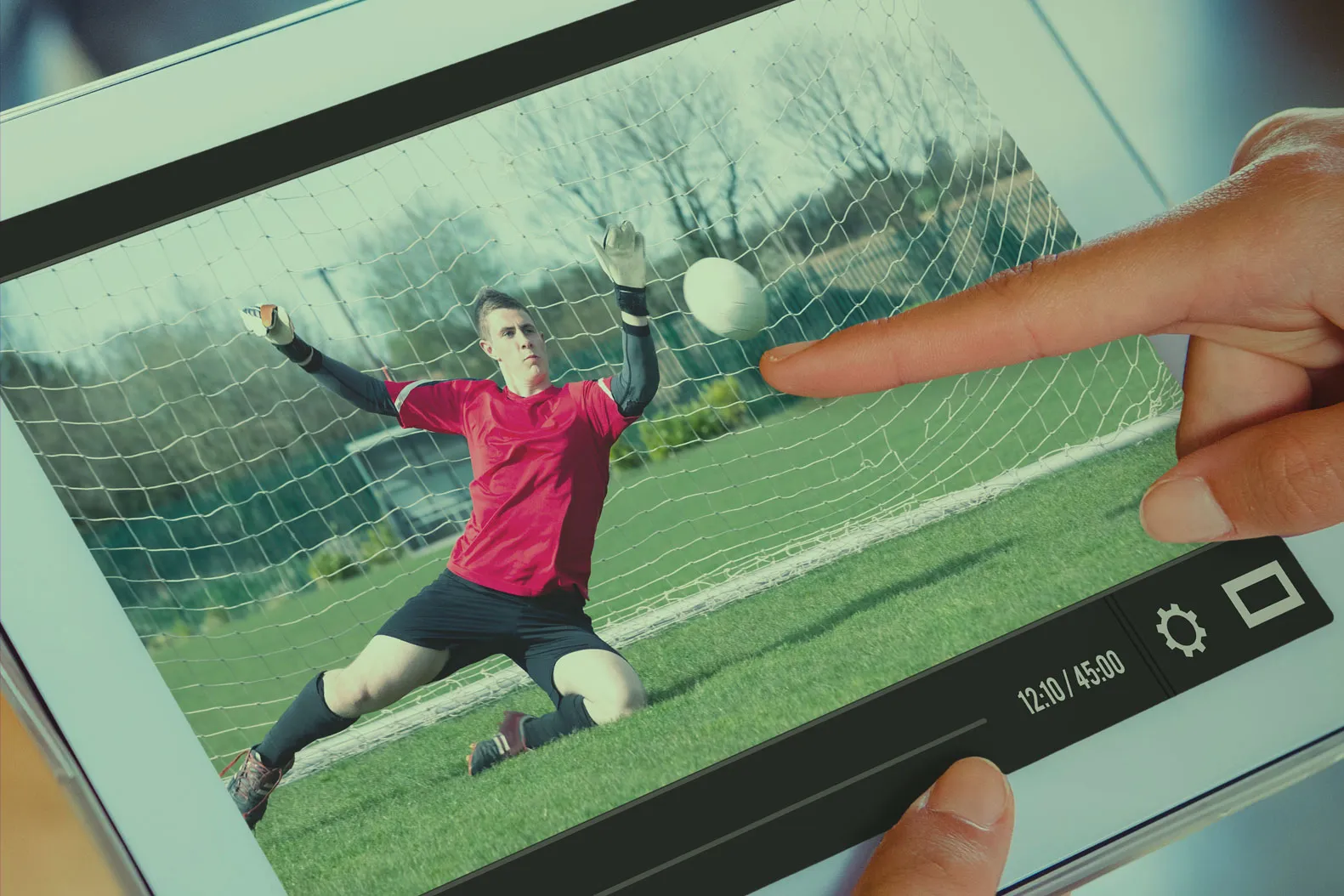
Video analysis for goalkeeper development: detailed study of actions for targeted improvement
Antoine Roex, Keeper In Motion – 20 February 2024
The use of video analysis is revolutionizing the training of goalkeepers, enabling a precise assessment of their performance. By breaking down each action in minute detail, this technology identifies areas for improvement, optimizing goalkeepers’ skills and responsiveness on the pitch.
In-depth technical analysis of performance
Video analysis is a powerful tool for scrutinizing the technique of goalkeepers. By slowing down action sequences, it allows technical details to be spotted that are often imperceptible to the naked eye during live matches or training sessions. Coaches can assess a goalkeeper’s posture when diving, the precision of his lateral movements or his positioning when facing shots. These observations can be used to identify specific weaknesses, such as poor weight distribution or imperfect jump timing, which could affect overall performance. By working directly on these weak points, goalkeepers can correct their mistakes and perfect their movements to be more effective and responsive in match situations.
Improved decision-making in game situations
Reviewing game sequences using video analysis offers a unique opportunity to assess and improve goalkeepers’ decision-making. When goalkeepers watch their own actions, they can understand the reasons behind tactical choices, such as stepping off their line to intercept a ball or staying back to cover their area. These analyses can also be used to study the movements of opponents, helping goalkeepers to better anticipate future actions and refine their reading of the game.
By understanding recurring patterns, goalkeepers develop their ability to adapt quickly, making more informed decisions in complex situations or under pressure. This enhances their confidence and their overall impact on the defence.
Personalised training programmes
Video analysis can be used to transform on-field observations into personalized, effective training plans. By studying the recordings, coaches can identify precisely the areas where the goalkeeper needs improvement, such as reaction time, ball control or coordination with defenders. This information is then used to create targeted exercises that meet the player’s specific needs. For example, a goalkeeper whose exits from corners are considered hesitant could benefit from intensive training focused on catching the ball at height in simulated situations. This tailor-made approach maximizes learning potential and ensures constant progress, enabling goalkeepers to meet the increasing demands of modern football.
Progress monitoring and ongoing evaluation
One of the key benefits of video analysis is its ability to provide objective and measurable monitoring of progress. By regularly comparing current performances with past recordings, goalkeepers and their coaches can assess the impact of training programmes on specific aspects of their game. This comparison highlights improvements, such as quicker movement or more accurate reading of opponents’ actions, while also identifying new areas to work on. This ongoing evaluation process encourages constant progress and motivates goalkeepers to achieve their long-term goals. By combining this approach with regular feedback and adjustments to training methods, video analysis becomes an indispensable tool for maintaining a high level of performance.
Conclusion
Video analysis has become an essential pillar in the development of goalkeepers in modern football. By providing an in-depth understanding of technical, tactical and decision-making aspects, it helps players hone their skills and excel in their role. By using it to tailor training sessions and assess progress, it ensures constant and lasting improvement. As analysis technologies evolve, this tool will continue to play a key role in goalkeeper training, enabling them to adapt to the ever-increasing demands of the game.
References :
- Gardiens de but en football : caractéristiques et pathologies spécifiques
- Analyse des déterminants de la performance du gardien de but
- Football de haut-niveau : analyses physique et physiologique – blessures et prévention
- Prophylaxie des blessures en football professionnel : Intérêts de l’expertise posturologique et de l’analyse biomécanique
- L’analyse biomécanique au football
